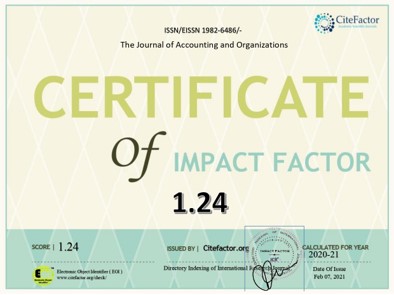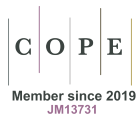Regras para submissão de artigos científicos
General Conditions:
Before submitting manuscripts for evaluation, authors must be aware of, and confirm that:
- The concepts, opinions, and ideas published in the works are the sole and unique responsibility of their author(s).
- Manuscripts submitted to RCO are unpublished. Works published in proceedings of scientific meetings, such as conferences, seminars, symposiums, etc., are considered unpublished.
- The manuscripts are not under evaluation in any other publication venue during the entire evaluation process.
- Maximum number of authors per article: 4. Exceptional cases duly justified may be analyzed by the RCO Executive Committee.
- Anonymity of authors in all submitted documents.
Preparing the Submission:
- Articles and documents will be submitted only through an electronic form available on the journal's website (http://revistas.usp.br/rco).
- Authors must correctly fill out their information in the submission system; this information is indispensable at the time of publication.
- Submissions that are not in compliance or are incomplete will be returned to the authors.
- Direct, concrete, objective style. Avoid the use of acronyms, including variable names in the text and tables. The variable name should be self-explanatory, direct, and immediate.
- Readers should easily understand what is being discussed.
Submission of a manuscript includes:
- A letter to the editor
- Complete data (phone numbers and address), institutional affiliation, and ORCID iD registration number, registered on the website.
- The main manuscript in editable format, must contain abstracts in Portuguese and English, as well as the 'Practical Implications Table' (see Manuscript Instructions).
- Supplementary documents, if necessary.
What is the "Practical Implications Table"? RCO has a strong commitment to the dissemination of scientific knowledge to Companies, Markets, and Governments. Thus, authors must clearly demonstrate how their results contribute to current practices. Whether in terms of regulation, company management, decision-making processes, how this affects practice, and can be used to transform it. The "Implications Table" is a 50-word statement on how the 'results' of the research in question interact with companies, markets, and governments. How these results can help companies, markets, and governments deal with an event or phenomenon addressed by the research results. The focus of the table is not on theory or method but on the contribution to society, presented in a way that directly engages professionals.
What should be submitted as supplementary documents? Data collection instruments, such as complete questionnaires applied, translations and adaptation of adopted foreign instruments, excerpts from cataloged interview segments, a complete list of articles reviewed in a systematic literature review and not referenced in the text, graphs, and tables of auxiliary tests, among others. The journal provides editorial space to communicate results objectively in the main text. Authors should use supplementary material to expose methodological and analytical procedures to the editor and reviewers. Part of this material may be requested to be disclosed if the article is approved.
The manuscript should be submitted in a file containing the article text or the document itself, with the characteristics described below. The first page should include:
- Article title (in Portuguese and English);
- Abstract;
- Between three and five keywords;
- Abstract (summary in English with the same content as the abstract);
- Keywords (in Portuguese and English);
- A practical implications table.
From the second page, the body of the article or document should follow. To ensure the anonymity of the evaluation process, the author(s) should not be identified in the body of the article or document.
There are no strict format requirements, but all articles should contain the essential elements necessary to communicate the manuscript's argument. Usually, articles are structured through Introduction, Theoretical Framework, Methodology, Results and Discussion, and Conclusion sections.
In the Introduction, authors are expected to present, not necessarily in the following order:
- The article's objective;
- The identified gap in the literature being filled by the article;
- Justifications for the importance of the gap;
- Explanations regarding how the article fills the gap;
- A brief description of the methodological aspects;
- A synthesis of the results and their innovative theoretical implications.
The Theoretical Framework can be structured differently, depending on whether the study uses a quantitative or qualitative strategy. For quantitative studies, the theoretical framework could include, not necessarily in this order:
- A synthesis of previous studies directly related to the research phenomenon, highlighting gaps in knowledge;
- The presentation of the theory(ies) supporting the study, emphasizing the definition of their main concepts and the expected causal relationships between them;
- The development of hypotheses.
Texts with qualitative approaches may naturally deviate from a model - hypothesis development, data, and tests - to a division into topics appropriate for discussing the evidence worked on by the author.
It is important to emphasize that the theoretical section should expand knowledge about the phenomenon and not repeat the presentation of theories already published in other articles.
The Methodology section should present detailed enough information to allow the study to be replicated. The emphasis should be placed on describing how the study was conducted, and we strongly suggest avoiding the use of taxonomies that do not allow the reader to understand what was actually done.
Combining the Results and Discussion sections is often appropriate, so authors are expected to explore the meaning of the results obtained, not just present them in isolation. Contrast with the literature is important, but we recommend avoiding extensive use of citations and discussion of already published articles. It is essential to discuss the study's limitations, threats to the robustness of the results, and any procedures adopted to limit the impact of such threats.
The Conclusion section should emphasize the significance of the results and not repeat their presentation. Authors are expected to discuss the theoretical implications of the results obtained, highlighting how they expect future research to be impacted by the results obtained in the article, and what research opportunities arise from the findings. The conclusion section must necessarily include a discussion of the practical implications of the results obtained from the study.
Necessary Adjustments after Desk Review Stage
After the initial evaluation stage, for submissions that continue in the evaluation process, the manuscript's adaptation to the format required by RCO will be requested. Thus:
- Manuscript must contain 4,000 to 6,000 words. The aim is to communicate the study results. The use of a more direct style, yet not superficial, should be preferred. Balanced use of apposition, short sentences, identified subject, and expressions constructed clearly are essential.
- Citations and References in APA style, including the respective DOI of each publication.
- Font: Times New Roman, size 12.
- Line spacing: single.
- Justified alignment.
- Margins: top and left – 3 cm, bottom and right – 2 cm.
- Limited use of acronyms (only 2 throughout the text and no acronyms in tables).
Citations should be made in the text using the author-date system, including page numbers (when applicable), according to the American Psychological Association (APA) guidelines. Complete references (including DOI) of cited works should be presented in alphabetical order at the end of the text, following APA norms. Illustrations such as figures, boxes, and tables should be editable and prepared according to APA standards, along with captions, credits, and source. If there are illustrations imported from other programs, such as Excel and PowerPoint, the original file should also be provided.
Footnotes and explanatory notes should be avoided. When these notes are strictly necessary, they should be sequentially numbered in the text and inserted at the end of the text. Additionally, acronyms throughout the text should also be avoided. The author should evaluate the need for using acronyms; if sparingly used, they may not be necessary. A maximum of two acronyms will be allowed. The use of acronyms in tables is not permitted.







